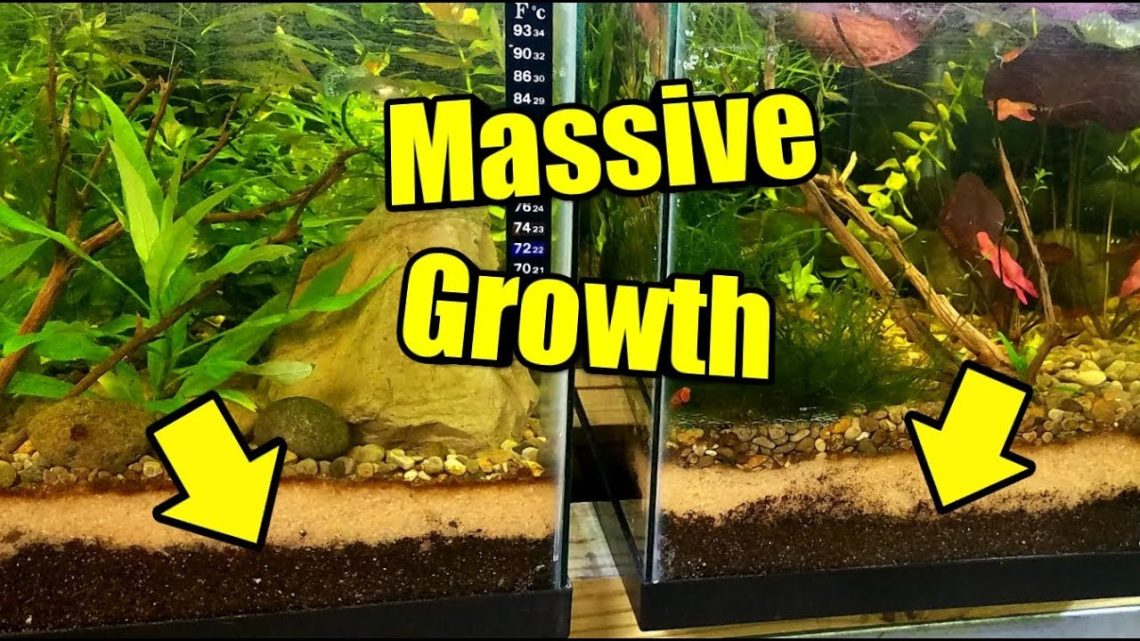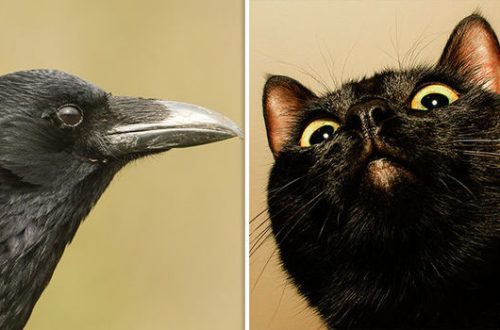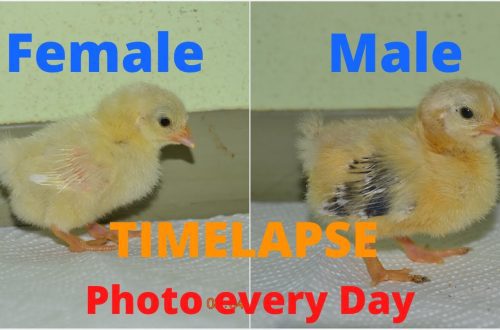
Which of the soils is best for the aquarium: types, its placement in the aquarium and plant care
The soil is an essential part of any aquarium. He plays a leading role in the structure of the underwater kingdom. Colored soil creates the individuality of the aquarium. It strengthens plants, it stores nutrients. Its selection should be approached responsibly. The quality of the substrate must necessarily meet the requirements of individual plant species and the conditions for keeping fish.
The bottom of the aquarium is not only its decoration, but plays an important role in biochemical life.
On the surface of the aquarium soil microorganisms accumulate: bacteria, fungi, bryozoans. With the help of it, the waste products of aquarium fish are processed.
It also functions as a filter. Microparticles settle in it, which pollute the aquarium water. That is why choosing it is a very important moment.
Before purchasing soil, you need to decide what it is required for. Plants need one soil. But for fish it’s different.
Aquarium substrate is divided into 3 groups. The first group includes natural sand, stones, pebbles, crushed stone, etc. The second group includes soils obtained as a result of chemical processing of natural materials. The third group is artificially obtained materials.
Contents
natural soil
This material is of natural origin: small stones, lava, quartz, pebbles, volcanic or quartz sand. It does not undergo additional processing. There are no nutrients in it. It can be used for planting plants. But they will rapidly begin to bloom only after 6 months. During this period of time, the aquarium soil will silt up, waste from decomposed nutrient residues will accumulate in it. It is them that plants will use for food.
Natural materials containing inclusions are not recommended. These can be reactive or alkaline materials that will release hazardous substances into the water.
If there are doubts about the quality of the soil, then it can be tested. You can use vinegar essence or citric acid. It will be considered usable if no hissing occurs and bubbles and foam do not come out. In this way, the problem of soil for aquarium plants is only found out, but not eliminated. If you do not want to throw away the aquarium substrate, then you can hold it in hydrochloric acid for 3 hours. Rinse under running water. Work should be done with silicone gloves, otherwise you can get burns. If you do get acid on your hands, you need to quickly rinse them under running water.
glass ground
This type of natural substrate is not desirable. Of course, it is chemically neutral. But there is no porosity on its surface. She is completely smooth. It will be impossible for bacteria and microparticles to develop.
It will not be possible to retain nutrients for bottom plants. They will wash out, underwater vegetation will die very quickly.
layered soil
A common mistake is to lay out the soil in layers, alternating large and small fractions. This cannot be done. The bottom litter must be porous so that it can breathe. This is required so that there is no stagnation of water, decay of organic matter. Otherwise, the aquarium will turn into a fetid swamp. Substances dangerous for fish will get into the water, which will lead to the death of the inhabitants of the underwater world.
Expanded clay
This material can be used but not recommended the following reasons:
- It is very light and has a small size. The fish will swarm in it. This will raise silt and dust, the water will instantly become cloudy;
- It, having a high porosity, will absorb organic contaminants. The water will become clogged and cloudy.
Garden land
There is an opinion that it is possible to use garden soil for aquarium plants. It’s a delusion. She will be cloudy in three days. It will be completely impossible to keep fish in such an environment.
Some aquarists recommend using soil from a reservoir. But it is dangerous and needs to be done carefully. If there is such a desire, then it should be taken only in rivers or quarries. From ponds, bottom flooring is very fraught to use.
Artificial ground
In pet stores, you can also see an artificial aquarium substrate. It is made from small particles of plastic or glass. It satisfies the requirements, is made from multi-color mixtures. But the coloring of this aquarium deck is very bright. The aquarium will decorate the interior, but it will not be a model of the aquarium.
What to look for
When choosing bottom flooring, certain rules must be followed.
Ground size:
- small fish – small substrate;
- Delicate root system – small particles of soil;
- Strong roots – coarse soil.
The nature of the inhabitants of the aquahouse
You can not ignore the habits of pets. If the fish are mobile, they like to dig in the ground, then it is necessary for them to purchase soil of a sufficiently large fraction so that the water is not cloudy.
But if the fish prefer to spend part of their lives burrowing into the ground, then large flooring is unsuitable for them. They will experience discomfort, because they will not be able to burrow.
The shape of the soil fractions
Particular attention should be paid to the shape of the soil. Its particles should be without potholes and chips, smooth and will be enough. If it is uneven, then it will be difficult to plant plants, and their survival rate will be reduced. Underwater inhabitants can injure themselves on uneven stones, get injured.
Color
Manufacturers offer colorful material. It is very popular among aqua designers. When choosing a color, it is necessary to build on the harmonious combination of shapes and shades of the soil. You can play with contrasting colors. You can use the rules of color.
How to place aquarium soil
Before placing in a container, it must be thoroughly rinsed. The pressure of running water should wash away lime and dust. If this is not enough, then you can boil it.
Do not use soap or dish detergent. Chemistry is very difficult to remove.
The soil is placed in an even layer. But you can also put it obliquely (from the far wall of the aquarium to the front). The underwater landscape will get relief.
Optimum layer height – 7 mm. If you pour more, then the pressure exerted by the soil on the walls of the aquarium will increase. He may not endure.
If the aquarium is filled with pebbles or gravel, then the thickness of their layers is allowed up to 15 centimeters. This is undesirable in amateur aquariums. It can be beautifully laid in a slide. It is very difficult to move this substrate. They will perfectly maintain the given relief of the bottom of the aquarium without additional reinforcements.
Certain Benefits has a substrate filling with a slope:
- Organic particles and food residues will accumulate in the low area of the bottom. This will make cleaning easier.
- The overview of the underwater world will improve due to the rise of the soil along the far wall;
- The variety of substrate thicknesses will allow you to correctly position the plants: small ones – in areas with a thin layer. Large – near the back wall.
Sand can also be laid in a slide. But it will quickly lose its shape due to the flow of sand. This movement will be assisted by fish, as well as aquarium clams.
Loose substrate is fixed with large stones. They must be flat. They are firmly dug into the sand, fixing the level of sand above or below the bottom of the aquarium.
You can make a multi-level soil using plexiglass plates that have the required shape. It needs to be heated over fire and given the desired shape. Having established a glass form at the bottom of the aquarium, pour the soil.
A thick layer will be poorly permeable. The risk of rotting plants and stagnant water in the aquarium will increase.
One can mix colored soil to create a pattern on the bottom of the aquarium. But it’s not for a long time. It will spread out very quickly.
At the end of the work, it is advisable to put pots, houses, snags, etc. on the bottom of the aquarium. Fill half the water with Aquadom and plant the plants. Top up the water. There should be at least 3 centimeters to the edge.
Do not rush to let the residents into the water house. It should take at least two weeks to establish the microflora of the water. During this time, the plants will take root and become stronger in the ground.
The new substrate is always poorly equipped with the minerals that the plants feed on. Floating plants can be fed from fresh water. But plants with a strong root system are doomed to death due to starvation. Therefore, care must be taken to introduce nutritional supplements into the aquarium substrate.
How to take care of the soil
If you correctly perform the bottom flooring, maintain its permeability, then it will be easy to take care of the soil:
- It just needs to be cleaned periodically. This will be done by a special device (siphon), which is sold at a pet store. With the help of a vacuum, he will suck out the remains of organic matter from the soil;
- You can take care of the soil with the help of other structures. These are electric pumps that are equipped with fabric bags. They filter the water. But these pumps require the utmost care when operating;
- Clean up when dirty. And it is recommended to completely change the aquarium substrate only once every five years;
- A new aquarium does not need to be cleaned during the first year. Plants need to be fed only with special fertilizers.
The aquarium can be filled with soil and not filled. Plants will live in pots. And for the bottom litter, you can take creeping echinodorus.
When choosing a filler for an aquarium, one must not forget about the goals. High-quality material for the aquarium will maintain the biological balance, the beneficial properties of water. Microorganisms that can provide natural air purification will live and work in it. And then the underwater world will decorate your cozy home every day, and his pets will be grateful to you for the housing provided.





